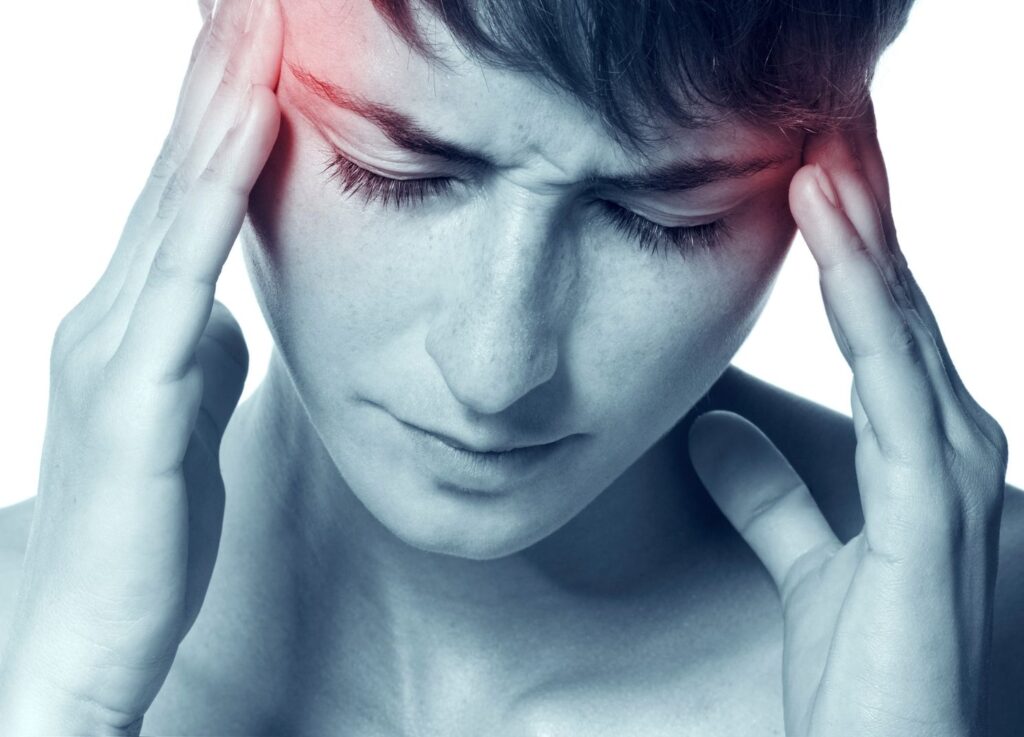Migraines and headaches can be a debilitating experience for many people. They can affect your daily routine, productivity, and overall quality of life. While medication can provide temporary relief, it is essential to address the root cause of the issue. That’s where chiropractic care comes in. This blog post will discuss how chiropractic care can help relieve headaches and migraines naturally without relying on medication. We will also explore the benefits of seeing a chiropractor for migraines, how chiropractic helps relieve headaches, and whether it is safe for treating migraines. So if you are tired of popping pills to alleviate your headache pain, keep reading to learn more about natural remedies for migraines through chiropractic care.
Thank you for reading this post, don't forget to subscribe!
What are Migraines and Headaches?
Migraines and headaches are two common types of neurological conditions that can cause discomfort and pain in the head. While they share some similarities, they have distinct characteristics and causes.
Headaches
Headaches are a broad term for any pain or discomfort experienced in the head or neck region. They can range from mild to severe and last for a short period or persist for hours or even days. Headaches can be categorized into primary headaches and secondary headaches.
- Primary Headaches: These headaches are not caused by an underlying medical condition and are considered standalone conditions. The most common types of primary headaches are tension headaches and migraines.
- Tension Headaches: Tension headaches are the most prevalent type and are often described as a constant dull ache or pressure around the head, typically affecting both sides. They can be triggered by stress, muscle tension, poor posture, or fatigue.
- Secondary Headaches: These headaches are symptoms of an underlying condition or illness, such as sinus infections, head injuries, medication side effects, or high blood pressure. Treating the underlying cause usually resolves the secondary headache.
Migraines
Migraines are a specific type of headache characterized by recurring moderate to severe throbbing or pulsating pain, often on one side of the head. Migraines are neurological and can be accompanied by various symptoms, including:
- Sensitivity to light, sound, or smells
- Nausea and vomiting
- Visual disturbances (such as auras or flashing lights)
- Tingling or numbness in the face or extremities
- Fatigue or dizziness
Migraines often have triggers that vary from person to person, such as certain foods or beverages, hormonal changes, stress, sleep disturbances, environmental factors, or sensory stimuli.
It’s important to note that migraines are a specific type of primary headache and are considered a neurological disorder. They can significantly impact a person’s daily life, causing disruptions and requiring specific treatment approaches.

Migraine Triggers and Chiropractic Management
Various factors can trigger migraines, and identifying and managing these triggers is crucial for migraine sufferers. Chiropractic care can play a role in managing migraines by addressing underlying issues that contribute to their occurrence. Here are some common migraine triggers and how chiropractic management can help:
- Neck and Spinal Misalignments: Misalignments in the neck and spine can cause migraines by pressurizing nerves and disrupting blood flow. Chiropractic adjustments can realign the spine, reducing tension and relieving migraine frequency and intensity.
- Muscle Tension and Imbalances: Tense and imbalanced neck, shoulders, and upper back muscles can contribute to migraines. Chiropractors use soft tissue therapy and muscle relaxation exercises to alleviate muscle tension, promoting headache relief.
- Poor Posture: Slouching or hunching can cause upper body muscle and joint strain, leading to migraines. Chiropractors can help by guiding on posture maintenance and suggesting exercises to strengthen postural muscles, minimizing the risk of migraines.
- Stress and Emotional Factors: Stress, anxiety, and emotional triggers provoke migraines. Chiropractic care can help manage stress by promoting relaxation, reducing muscle tension, and improving overall well-being. Chiropractors may also recommend stress reduction techniques, lifestyle modifications, and mindfulness practices.
- Jaw Misalignment and TMJ Disorders: Problems with the temporomandibular joint (TMJ) and jaw misalignments can contribute to migraines. Chiropractic adjustments and targeted techniques such as jaw manipulation or exercises can help alleviate TMJ-related migraines.
- Environmental Factors: Bright lights, loud noises, and strong odors can trigger migraines. Chiropractic care cannot directly address these triggers but can improve the body’s resilience to environmental stressors. This may reduce the severity and frequency of migraines.
- Hormonal Changes: Hormonal fluctuations can be a significant migraine trigger, particularly in women. Chiropractic care can help regulate the nervous system and optimize hormonal balance, potentially reducing the impact of hormonal triggers on migraines.
What are the Benefits of Seeing a Chiropractor for Migraines?
Seeing a chiropractor for migraines can offer several potential benefits. While it’s important to note that individual experiences may vary, here are some potential advantages of chiropractic care for migraines:
Non-invasive Approach
Chiropractic care focuses on natural, non-invasive treatments to address health issues. Chiropractic care can be an appealing option for individuals seeking alternatives to medications or surgical interventions.
Addressing Underlying Causes
Chiropractors aim to identify and address the underlying causes of migraines rather than solely focusing on symptom management. They often consider factors such as spinal misalignments, muscle tension, nerve irritation, and poor posture, which could contribute to migraines.
Spinal Alignment and Nerve Function
Chiropractors utilize spinal adjustments or manipulations to correct misalignments in the spine, known as subluxations. By realigning the spine, chiropractors aim to alleviate pressure on nerves and improve their function. This can positively impact various systems in the body, potentially reducing migraine frequency and intensity.
Muscle Relaxation and Tension Reduction
Chiropractors may employ massage, stretching exercises, and muscle relaxation techniques to address muscle tension and tightness in the neck, shoulders, and back. By releasing muscle tension, they alleviate stress on the head and potentially reduce the occurrence of migraines.
Complementary Therapies
Chiropractic care often incorporates additional therapies such as heat therapy, cold therapy, ultrasound, electrical stimulation, and lifestyle recommendations. These complementary approaches can provide pain relief, relaxation, and support for managing migraines.
Individualized Treatment Plans
Chiropractors typically develop personalized treatment plans based on a thorough assessment of a patient’s medical history, lifestyle factors, and examination findings. This tailored approach allows for customized care that considers each individual’s unique needs and characteristics.
Is Chiropractic Safe for Treating Migraines?
Chiropractic is a safe and non-invasive treatment for migraines. With its focus on addressing the root cause of headaches, it can provide long-term relief. It’s important to note that chiropractic care involves manual spinal adjustments and other techniques to improve the alignment and function of the musculoskeletal system. This approach is based on the theory that misalignments in the spine (subluxations) can affect the nervous system and contribute to various health conditions, including migraines.
The safety of chiropractic care largely depends on the individual practitioner’s skills and the specific techniques used. When performed by a qualified and experienced chiropractor, chiropractic adjustments are considered safe for most people. However, there are potential risks associated with spinal manipulations, such as temporary soreness, stiffness, or rare instances of more serious complications like stroke or spinal cord injury. These serious complications are extremely rare but have been reported in the scientific literature.
Suppose you are considering chiropractic care for migraines. In that case, it is crucial to consult with a healthcare professional, such as your primary care physician or a neurologist, who can provide a comprehensive evaluation of your condition and guide you on the most appropriate treatment options. They can help determine if chiropractic care suits you and can be integrated into your overall migraine management plan. Communication with your chiropractor about your medical history, including any pre-existing conditions, is essential to ensure your safety during treatment.

How Chiropractic helps relieve Headaches and Migraines
Chiropractic care can be beneficial in relieving headaches and migraines for some individuals. Chiropractors focus on the relationship between the spine and the nervous system, and they believe that misalignments or restrictions in the spine can affect the body’s overall functioning, including the head and neck region.
Here are some ways chiropractic care may help with headaches and migraines:
- Spinal manipulation: Chiropractors use spinal adjustments or manipulations to improve the alignment and mobility of the spine. This technique reduces tension and stress on the nervous system, potentially alleviating headache symptoms.
- Posture correction: Poor postures, such as slouching or forward head posture, can contribute to tension headaches. Chiropractors can help identify and correct postural issues, which may reduce the frequency or severity of headaches.
- Muscle relaxation: Chiropractors often employ soft tissue techniques, such as massage or trigger point therapy, to relax tight muscles and reduce muscle tension that can contribute to headache pain.
- Lifestyle and ergonomic advice: Chiropractors may recommend lifestyle modifications, including exercises, stretches, and ergonomic adjustments, to help prevent headaches or migraines triggered by certain activities or positions.
- Stress reduction: Chiropractors may offer stress management techniques, such as breathing exercises or relaxation strategies, to help individuals manage stress levels. Stress is a common trigger for headaches and migraines.
Conclusion
Migraines and headaches can be debilitating, affecting the quality of life for those who experience them. While many medications are available to help alleviate the pain, they often come with unwanted side effects. Chiropractic care offers a natural approach to headache relief that targets the root cause of the problem rather than just masking the symptoms. By correcting misalignments in the spine and improving nerve function, chiropractic care can help reduce the frequency and intensity of migraines and headaches. It is a safe, effective, and drug-free alternative that has helped many people find long-term relief. If you struggle with migraines or headaches, consider seeing a chiropractor for natural relief. Contact us for a consultation today to learn more about how chiropractic care can help you find headache relief.


Recent Comments